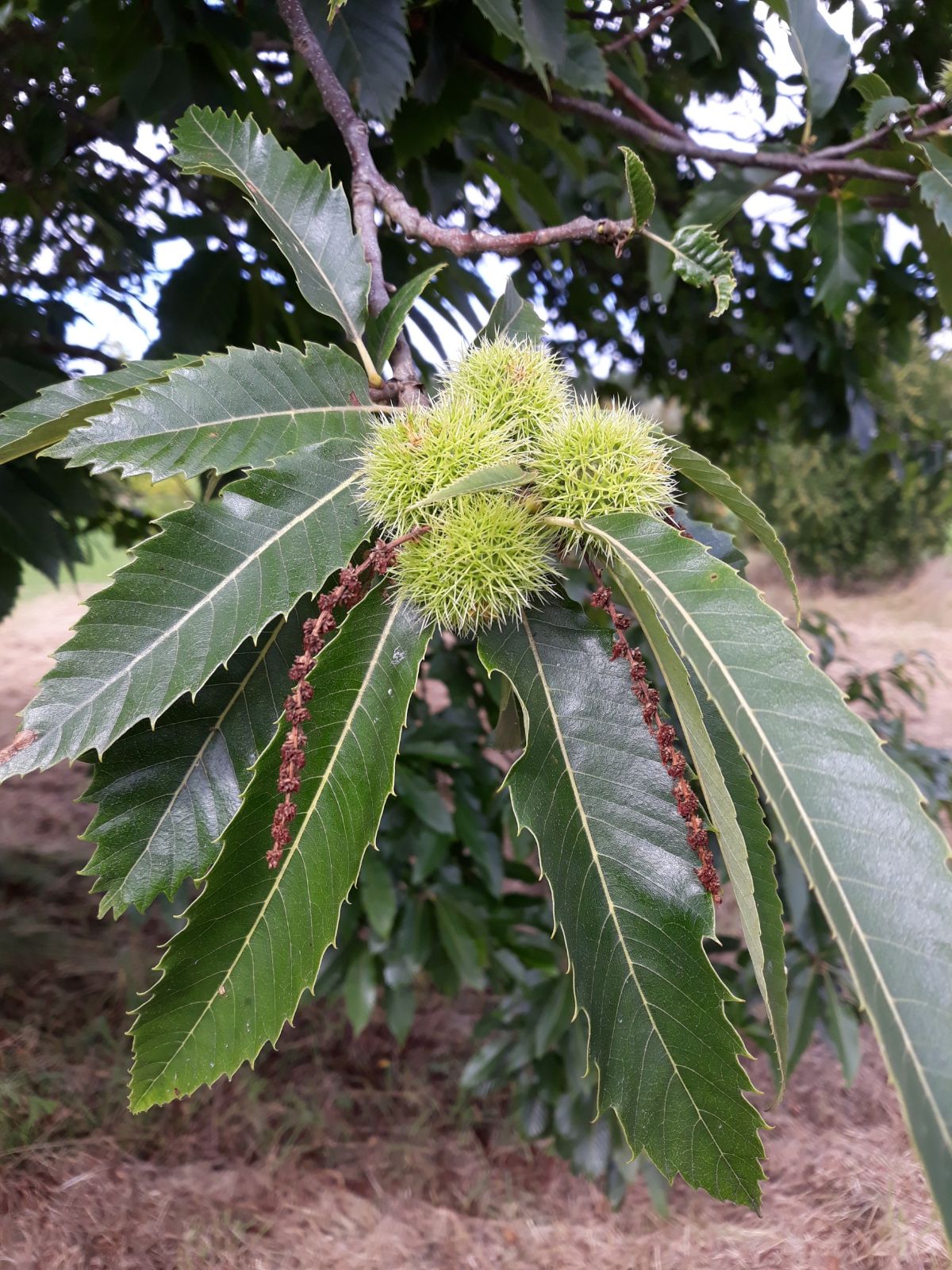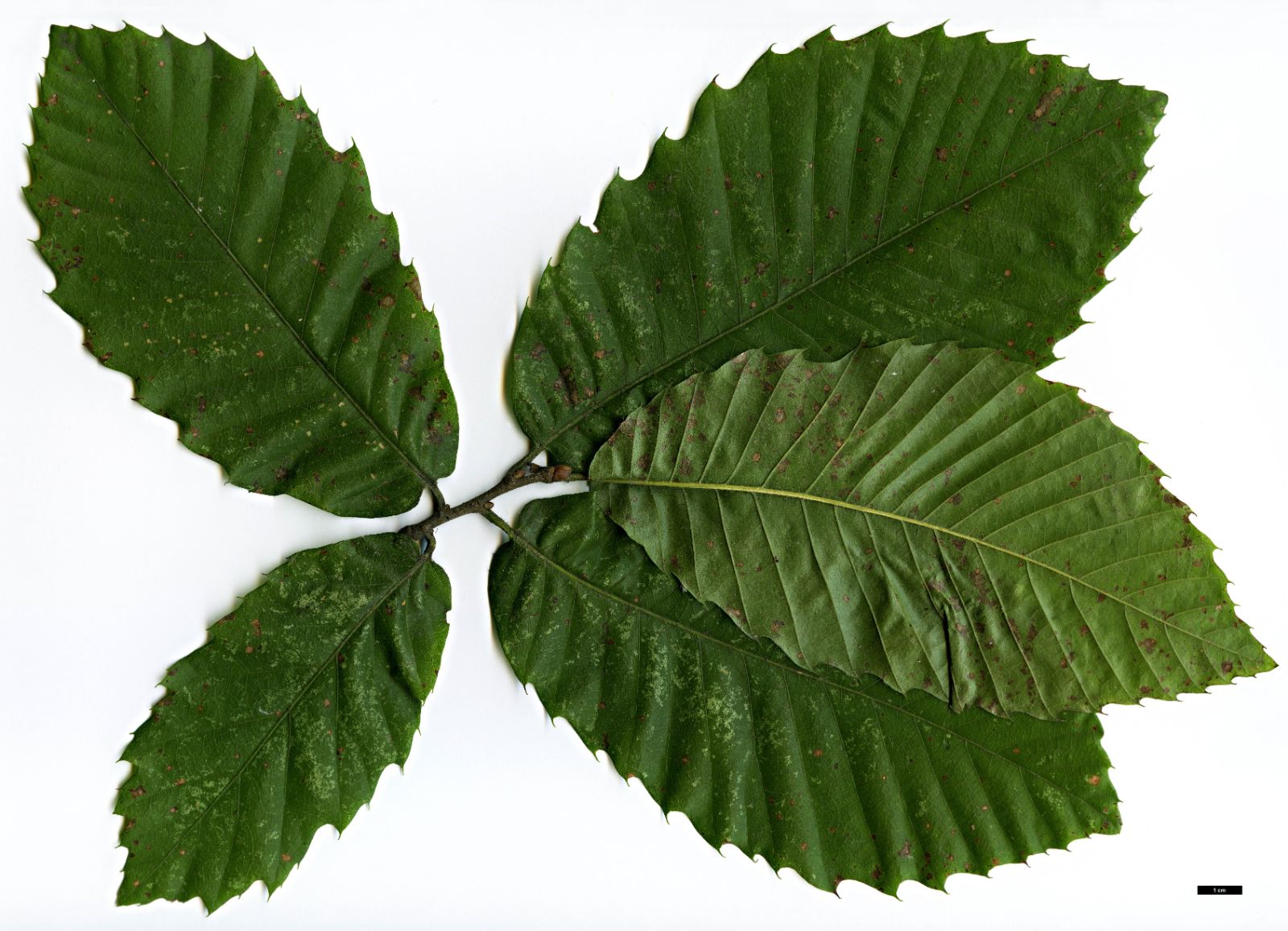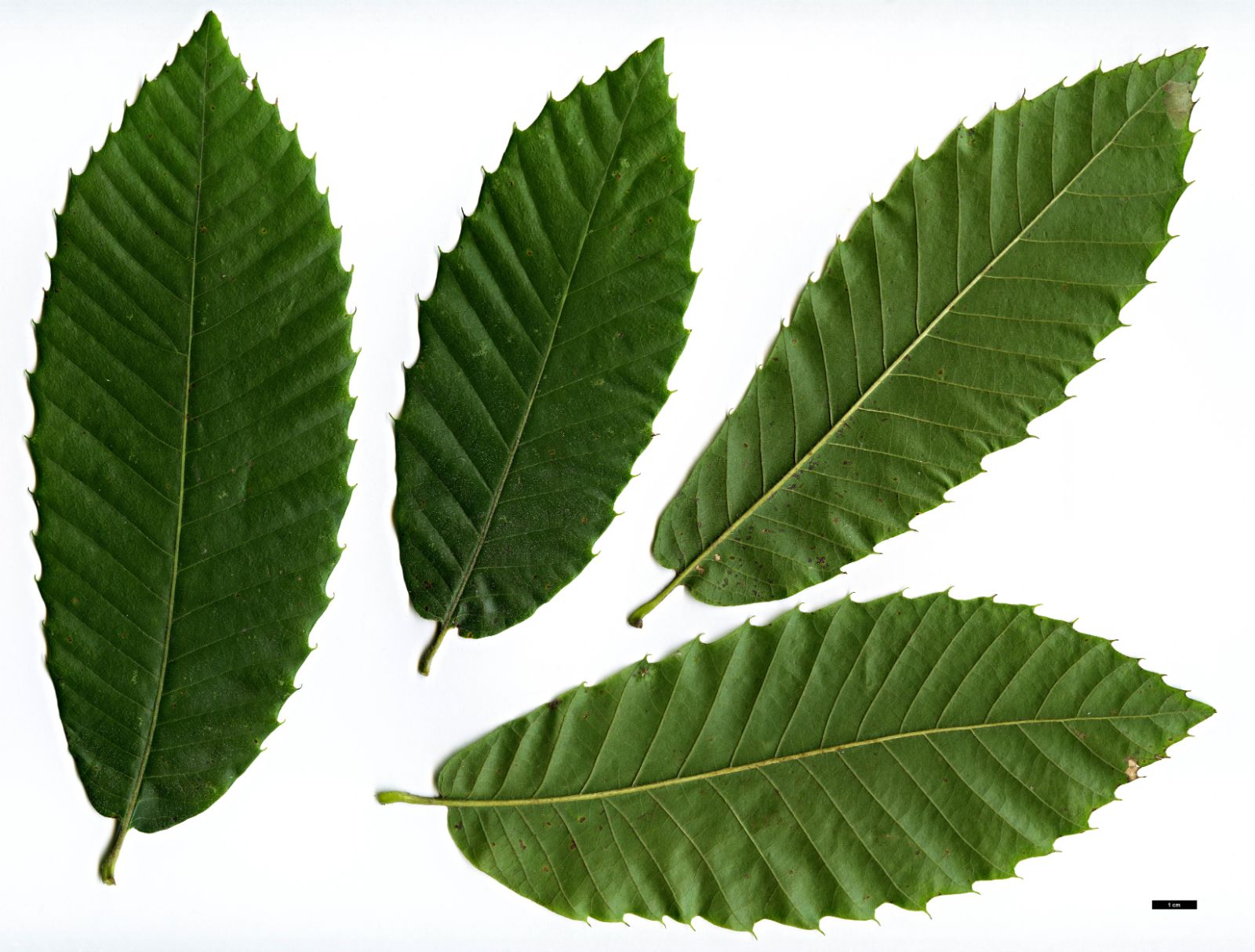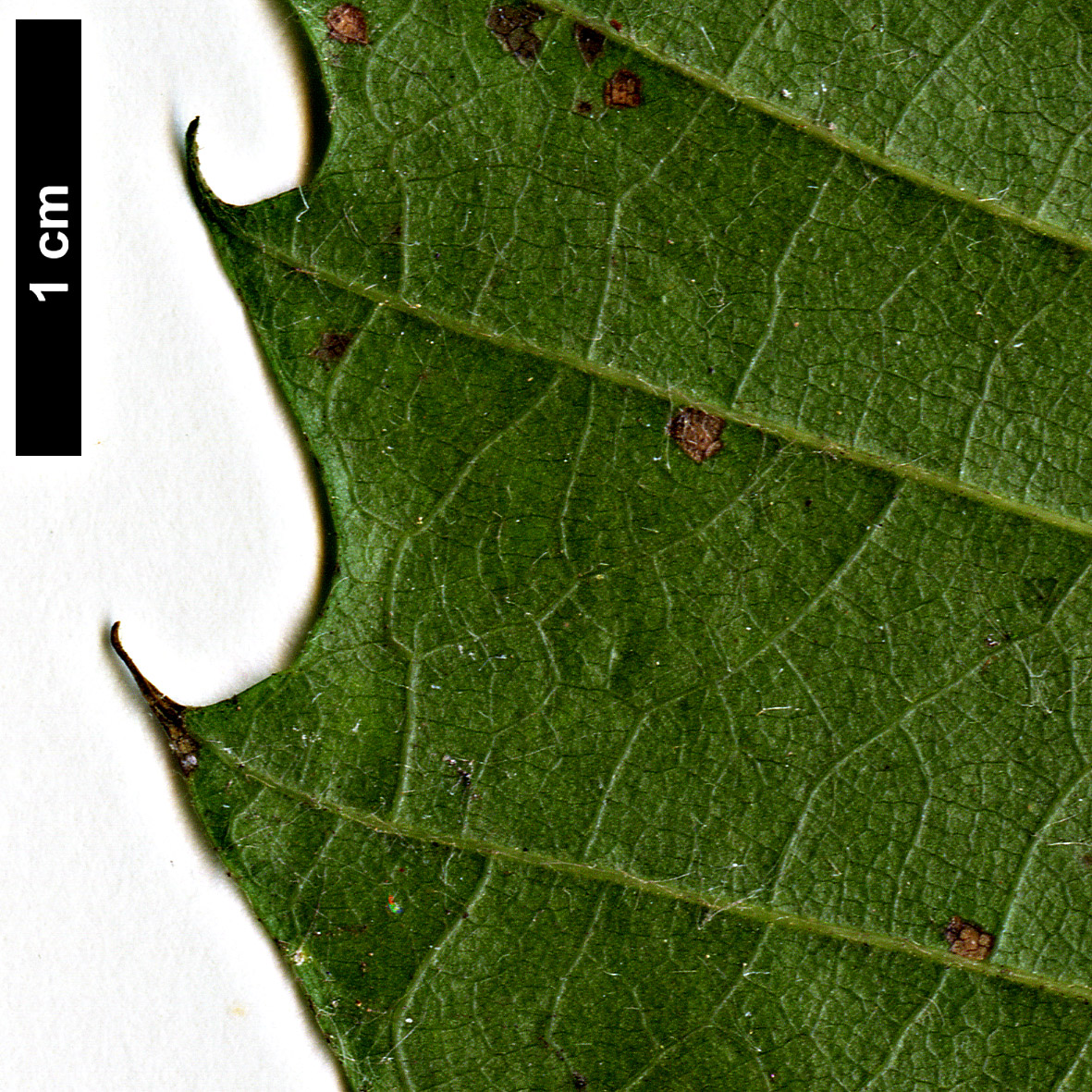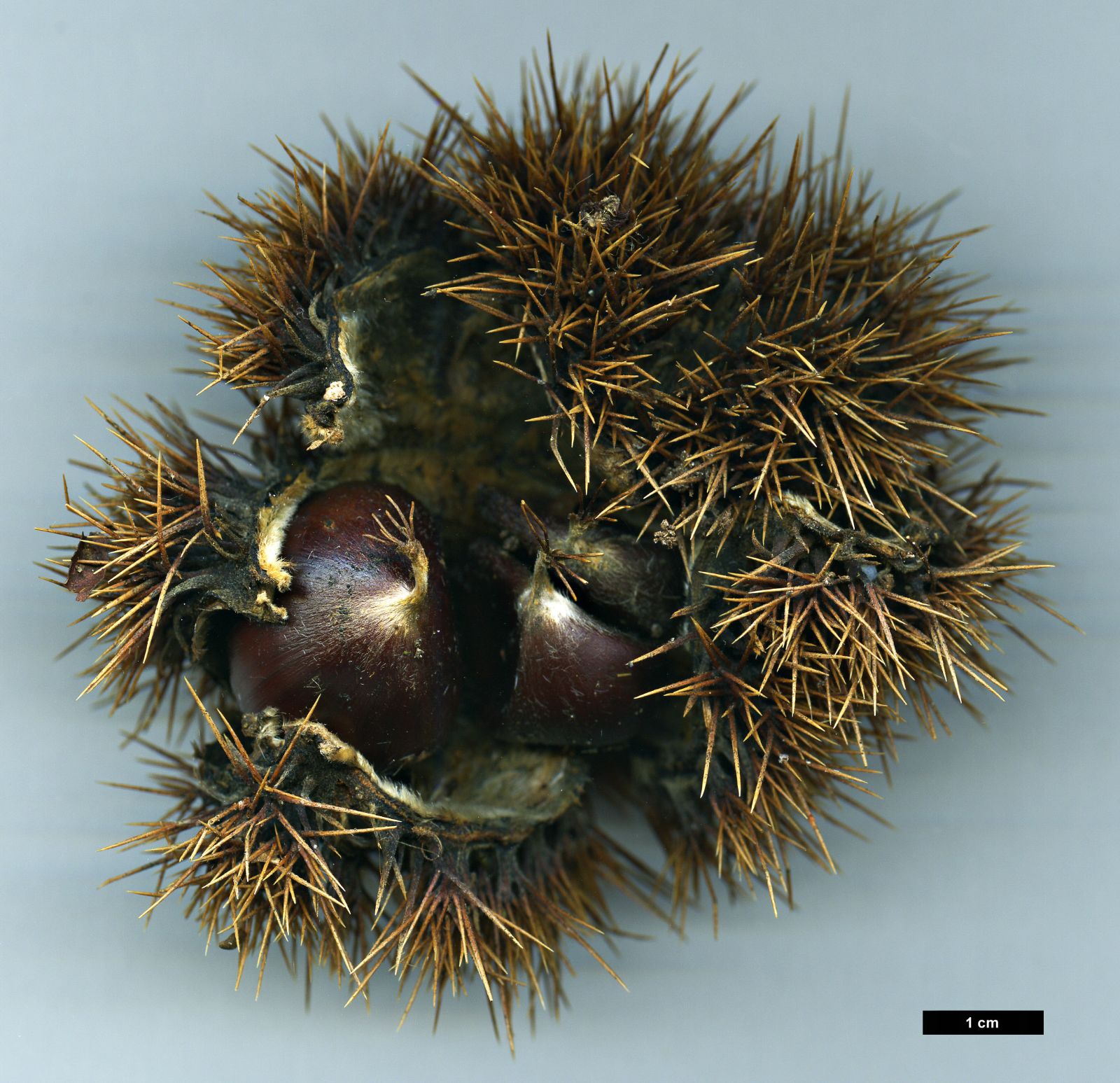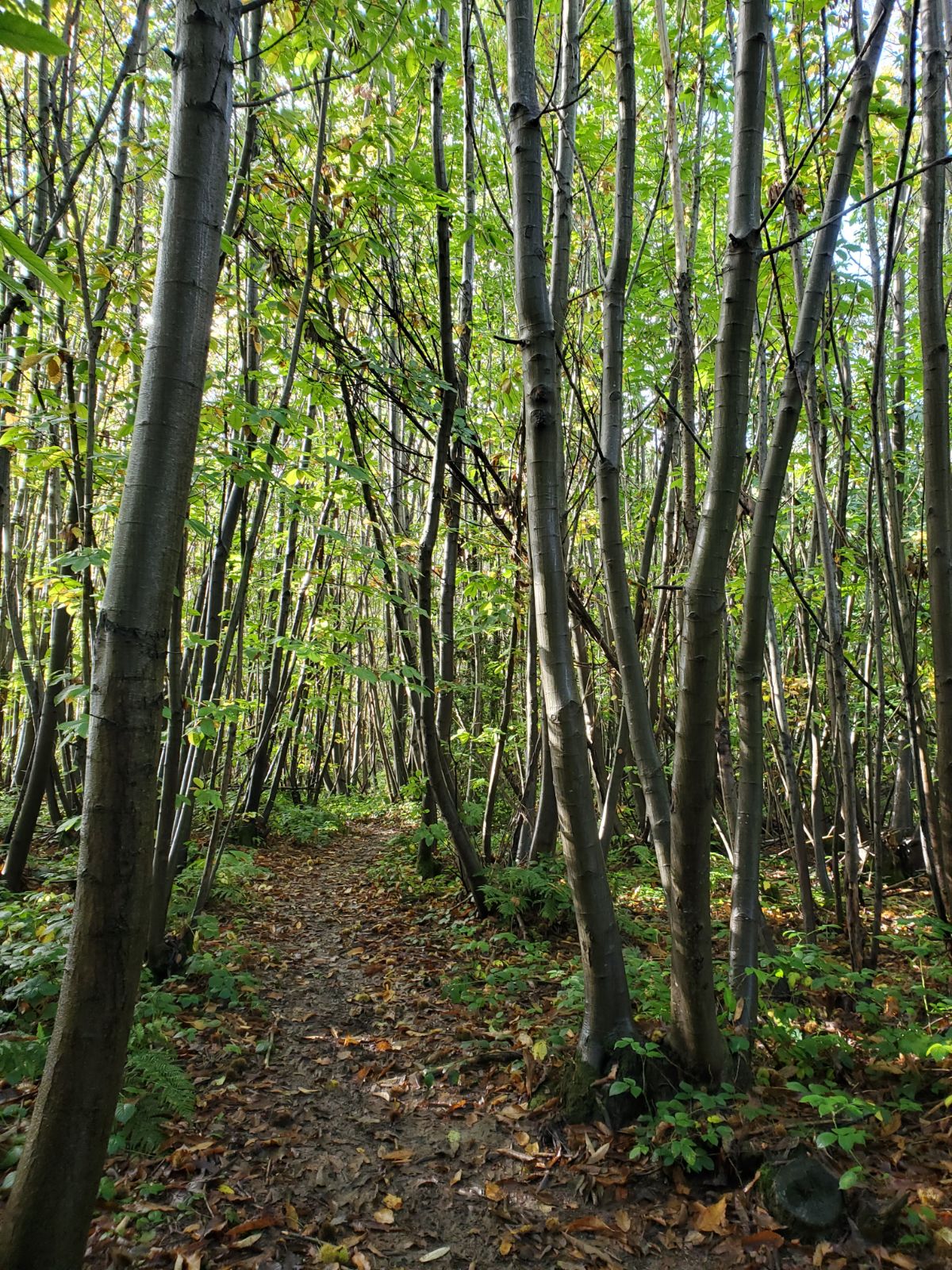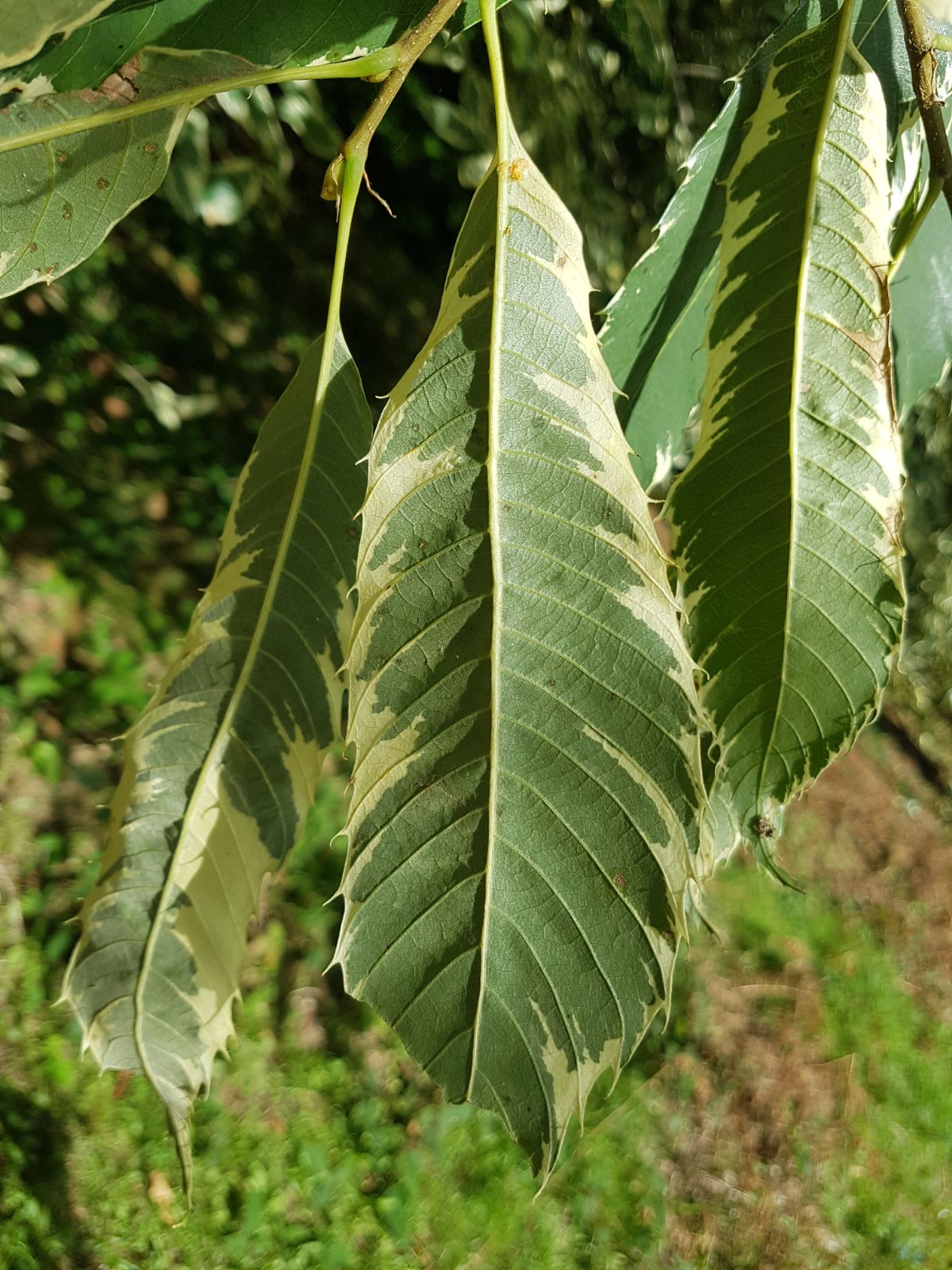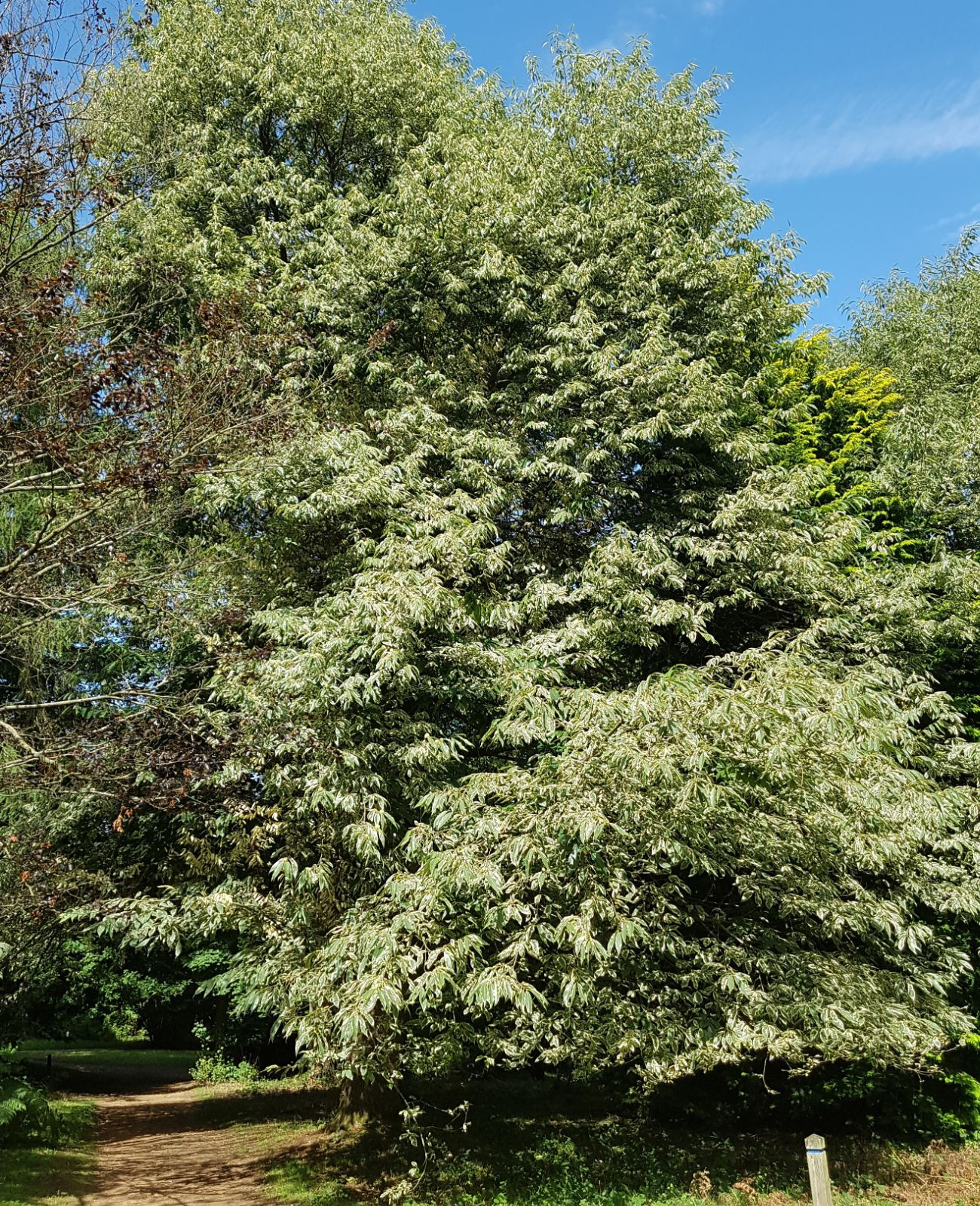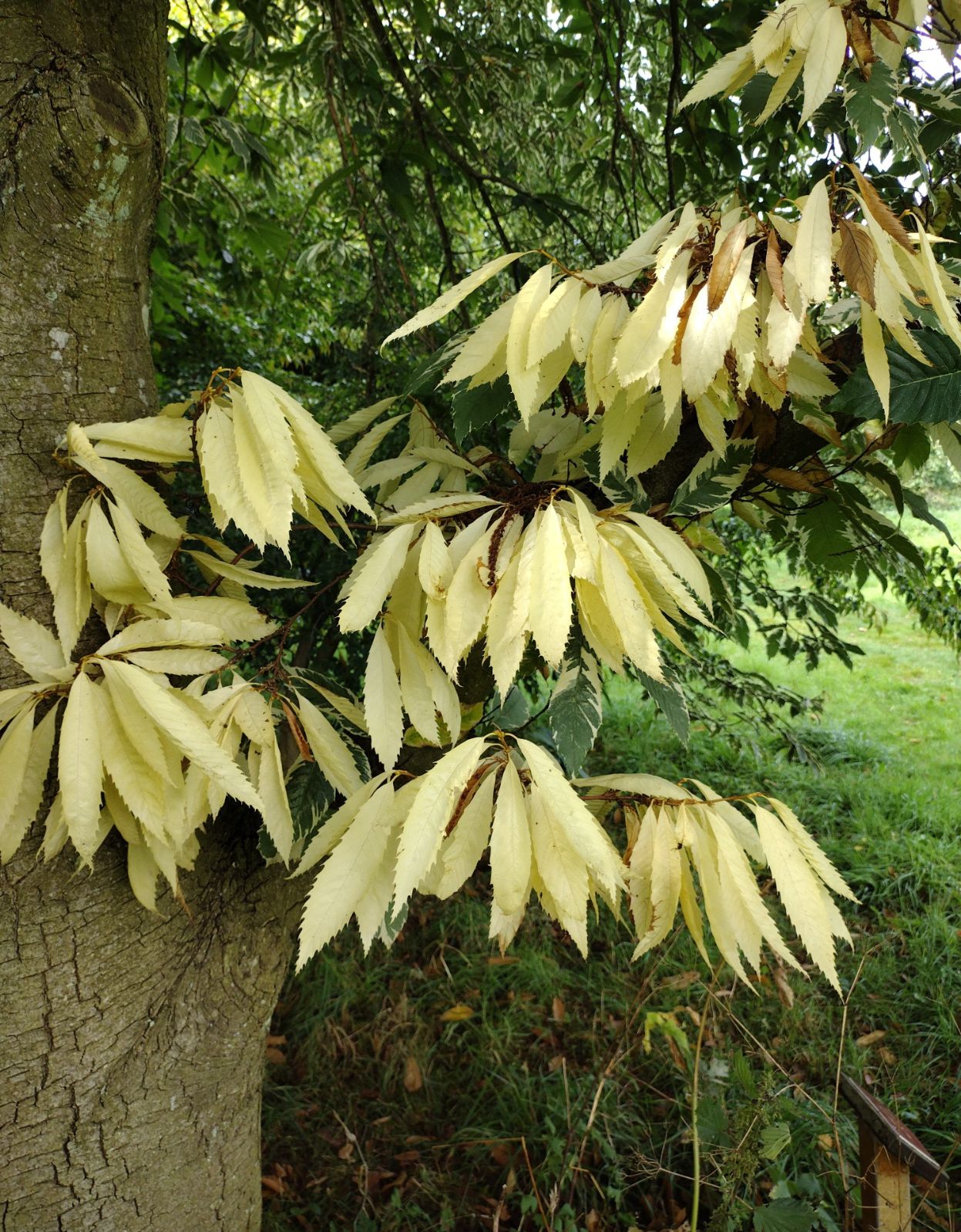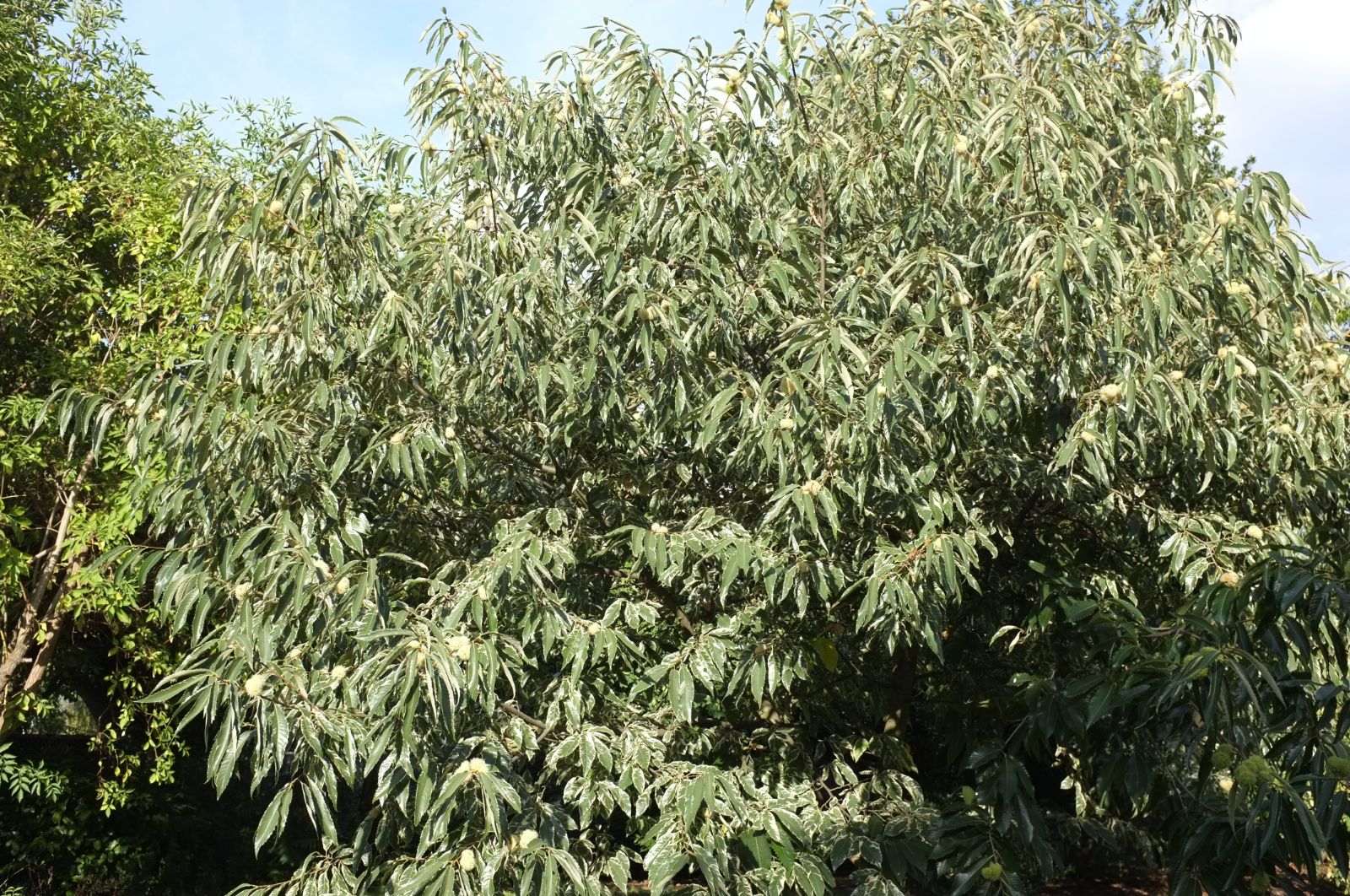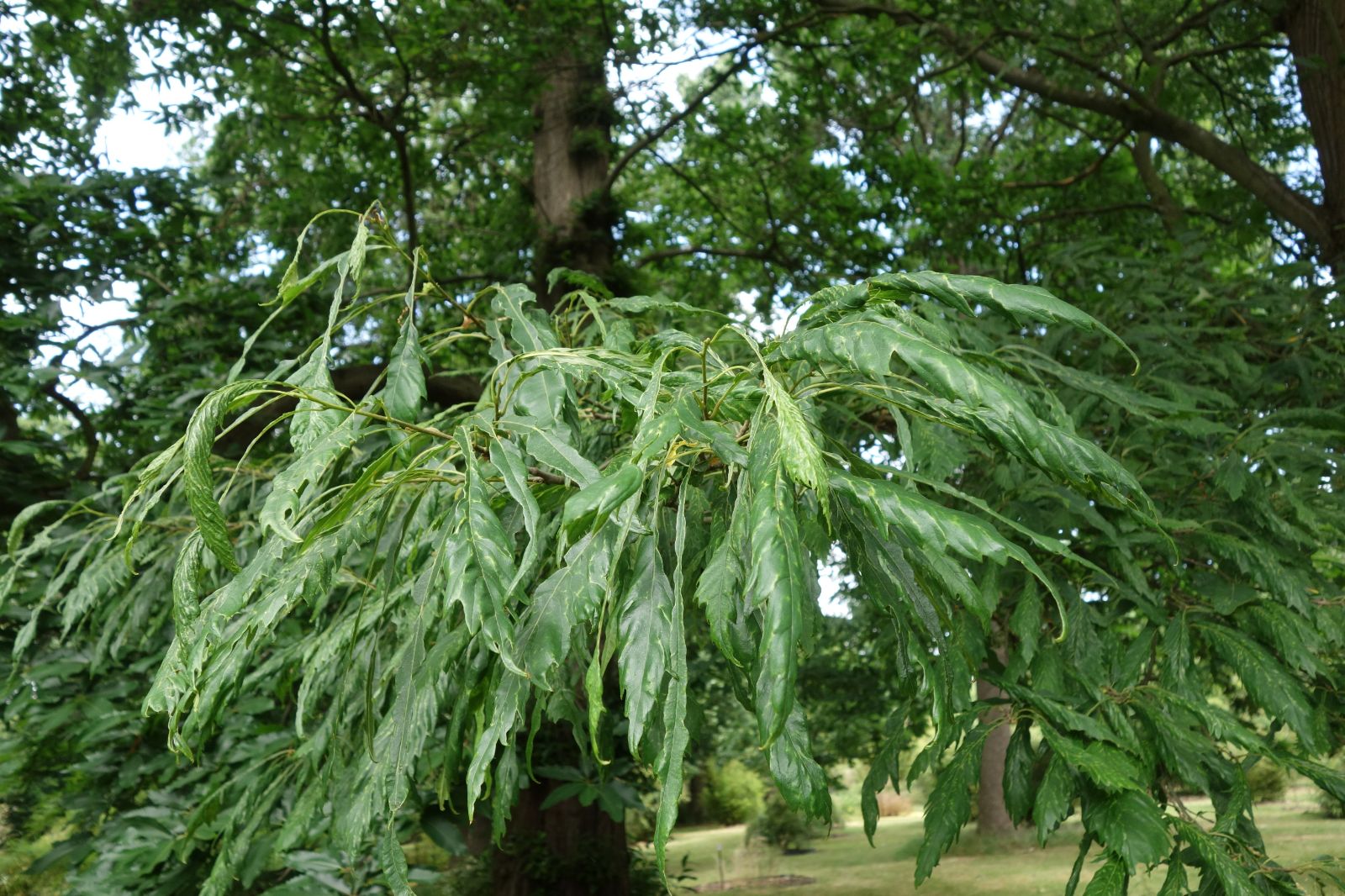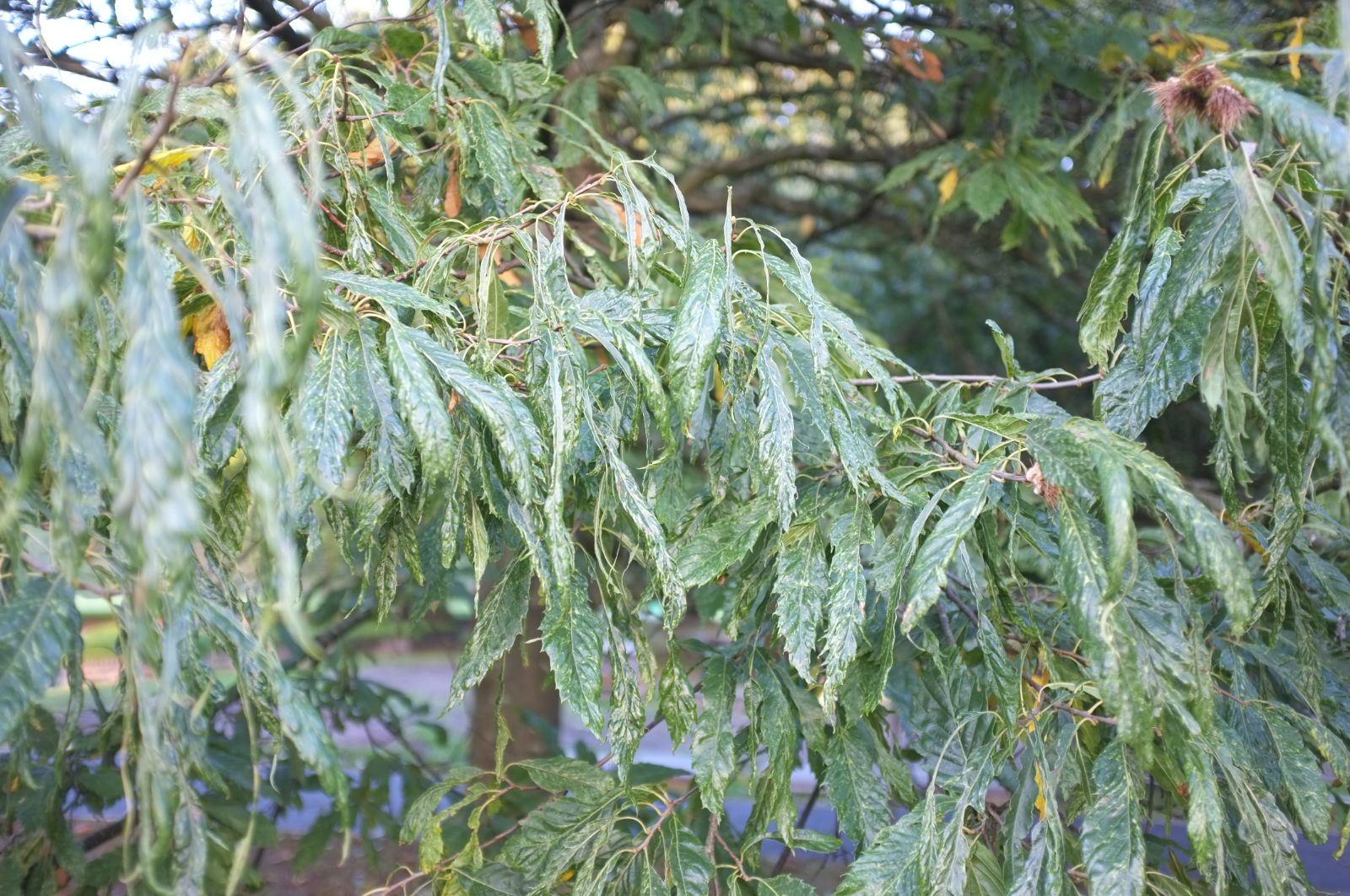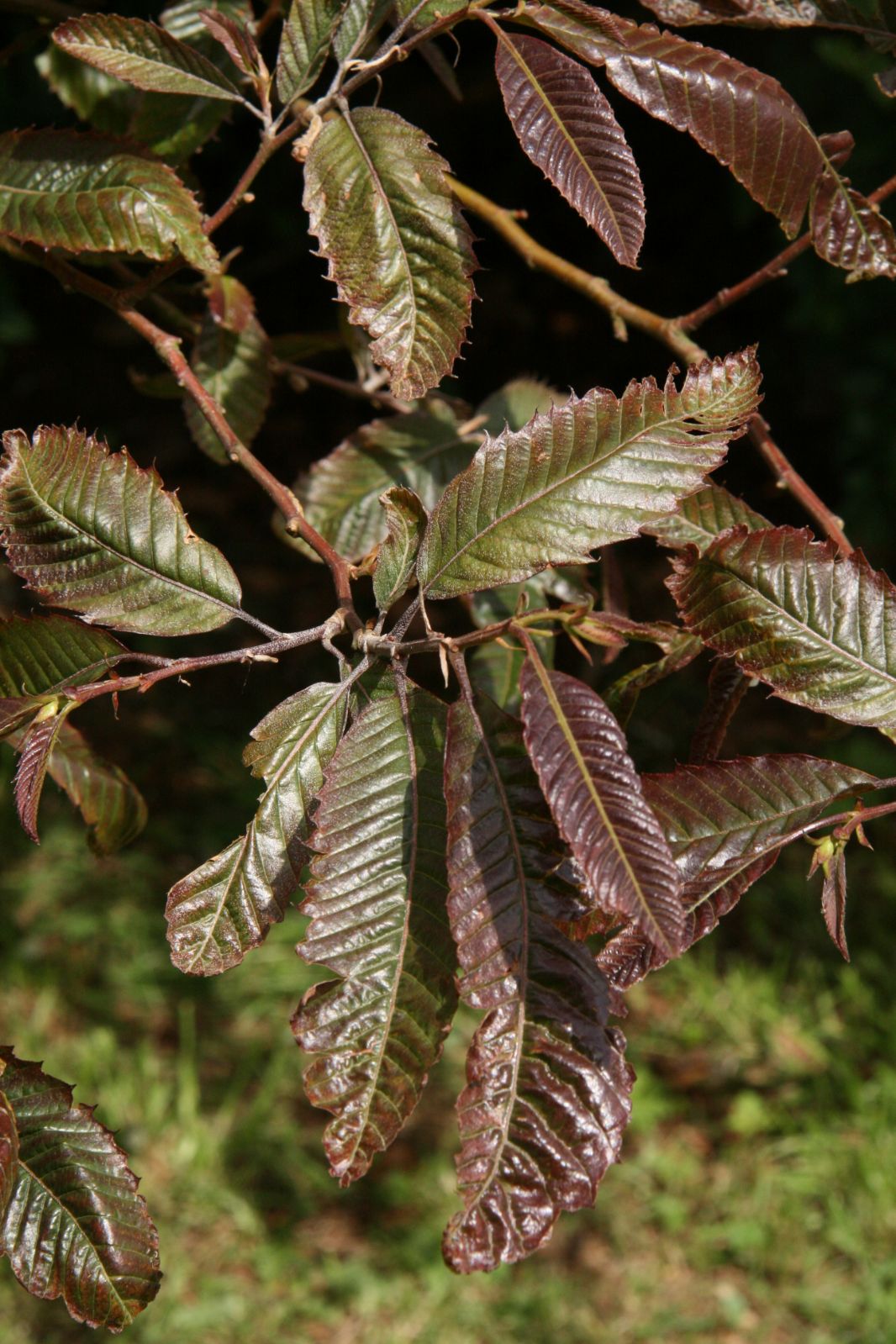Castanea sativa
Credits
Article from Bean's Trees and Shrubs Hardy in the British Isles
Recommended citation
'Castanea sativa' from the website Trees and Shrubs Online (treesandshrubsonline.
Genus
Common Names
- Sweet Chestnut
- Spanish Chestnut
Synonyms
- C. vesca Gaertn.
- C. vulgaris Lam.
- Fagus castanea L.
A tree of the largest size, 100 ft or more high, with an enormous girth of trunk (sometimes 30 to 40 ft); young shoots at first covered with a minute down, or glabrous. Leaves oblong, with a narrowed, pointed apex, and a rounded, slightly heart-shaped or tapered base; coarsely toothed, 5 to 9 in. long, 2 to 31⁄2 in. wide; stalk 1⁄2 to 1 in. long. When they first expand, they are covered beneath with a close felt which often rapidly falls away. Nuts red-brown, usually in twos or threes, enclosed in a globose, very prickly fruit or bur, 11⁄2 to 2 in. across. They vary in size, according to the number in each bur, from 3⁄4 to 11⁄4 in. across; sometimes there are four, sometimes only one, in a fruit.
Native of S. Europe, N. Africa, and Asia Minor. It is supposed to have been introduced to Britain by the Romans, and certainly existed in our islands previous to the Norman Conquest. It may be found springing up naturally in different parts of the country, and no foreign tree except perhaps the sycamore, can be said to have adapted itself better to our climate. In the south of Europe, where the nuts are much more esteemed as food than they are with us, numerous named varieties are in commerce. Of these ‘Marron de Lyon’, ‘Gros Merle’, and ‘Paragon’ are sometimes cultivated in England; they are propagated by grafting on seedlings of the common sort. In propagating the type itself, it is worth while to select the nuts from trees that bear them of good size. The sweet chestnut is intolerant of lime in the soil.
With us, however, the tree is grown chiefly as a park ornament, and for coppice. Certainly no tree gives greater distinction to a park or garden than an old, finely developed chestnut. For dry, hot soils no tree of its class is better adapted. At Kew, in shallow, sandy soil there are several fine specimens, one over 25 ft in girth of trunk. There are many splendid chestnuts scattered over the country. Perhaps the finest stand in the British Isles is the ‘Chestnut Tole’ at Godinton Park, Ashford, Kent. Here the tallest measure 118 × 113⁄4 ft and 116 × 161⁄4 ft. At the other end of the British Isles there are two remarkable trees at Castle Leod in Ross and Cromarty, planted in 1550, the larger of which measures 83 × 243⁄4 ft with a bole of 18 ft (1966; 76 × 213⁄4 ft in 1908). There are many large trees of exceptional girth at Shrublands Park, Ipswich. The timber much resembles oak, but is far from being as valuable, and very liable to ‘shake’ or split at the annual rings. Coffins made of it are frequently supplied as of genuine oak. The sweet chestnut has sported into a number of varieties, of which the following may be mentioned:
From the Supplement (Vol. V)
specimens: Bushey Park, Herts., in Glazewood Road, 36 × 30 ft (1981); Godinton Park, Ashford, Kent, the tallest of five trees 121 × 171⁄4 ft, and the largest in girth 72 × 281⁄2 ft (1983); Howletts Park, Kent, 75 × 311⁄4 ft (1983); Chilham Castle, Kent, 60 × 291⁄4 ft (1983); Cowdray Park, Sussex, near the A272, 80 × 291⁄4 ft (1984); Petworth House, Sussex, 105 × 191⁄4 ft and 115 × 181⁄4 ft (1983); Silwood Park, Berks., 70 × 32 ft (1982); Betchworth Park, Surrey, 56 × 281⁄2 ft (1984); Highnam Pinetum, Glos., 72 × 341⁄2 ft at 2 ft (1984); Gaunts, Wimborne, Dorset, 70 × 281⁄4 ft (1973); Kentchurch Court, Heref., 60 × 263⁄4 ft (1975); Croft Castle, Heref., in Home Park, 56 × 281⁄4 ft and, in Avenue, 75 × 28 ft and 85 × 28 ft (1984); Hewell Grange, Worcs., 72 × 281⁄4 ft (1974); Nettlecombe, Som., 80 × 271⁄4 ft (1984); Chatsworth, Derbys., 98 × 181⁄2 ft (1984); Castle Leod, Ross, pl. 1550, 92 × 281⁄4 ft (1980).
cv. ‘Pyramidalis’. – This and ‘Holtii’ are alternative names for the same clone.
'Albomarginata'
Leaves margined with creamy white. ‘Argenteo-marginata’ is similar (perhaps the same clone).
'Aspleniifolia'
Loudon’s description reads: ‘has the leaves cut into shreds, regularly or irregularly, and sometimes so as to appear like linear-lanceolate leaves’ (Arb. et Frut. Brit., p. 1984, 1838). Distributed by Loddiges nursery. Sports such as this one are reported to occur frequently and many were propagated and distributed in the last century under such names as dissecta, dissecta nova, filipendula, linearifolia, heterophylla, etc. In all of them the leaf-blade is much, but irregularly, narrowed, sometimes to {1/2} in. or less in width, but extraordinarily variable in form and length. A leaf found on a tree on Esher Common was 18 in. long, and in parts less than {1/4} in. wide. These curious leaves are usually borne at the end of the summer shoot.
'Aureo-marginata'
Leaves similar to ‘Albo-marginata’, but with the margins yellow; very handsome.'Holtii'
A tree of rather conical habit, cultivated at Kew from graft-wood received from a Mr Holt in 1907. The parent tree grew at Mount Maskell, Kent.'Laciniata'
In this striking variety the teeth end in long, thread-like points. There is a large specimen at Westonbirt, Glos., in Silkwood. The name adopted here, although apparently the correct one, is usually given as a synonym of ‘Asplenifolia’, which has quite different leaves.
'Purpurea'
Leaves of large size (as much as 5 in. wide), purple when young, especially on the upper half, coppery in autumn. The original tree grew at Rostrevor.


